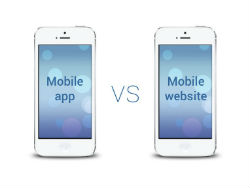Today’s goals:
- Discuss the differences between websites and mobile applications (apps)
- Learn about progressive web apps
Today’s featured site:
- http://appvswebsite.com/ – It’s not just about money; pretend you have a big budget to see some of the differences between mobile apps and websites
App vs website
- What are your favorite apps and why you like them so much?
- Can you name a mobile app that doesn’t also have a website? Can you name a website that also has a mobile app?
- Think about how you use your phone to do certain things. What apps do you use the most? Why? When do you use the browser? Why?
- How do you open an app? How do you go to a website?
- How do you navigate an app? How about a website?
- What is the difference between an app and a website?
- How much time do people spend in mobile apps vs browsing the internet on their phones?
- How do you choose what to make- an app or a website?
- What is a native app? A hybrid app? A web app?
- What are the 2 dominant mobile app platforms?
Progressive Web Apps
- Important vocabulary: website (webpage viewed in browser), native apps (mobile apps created for smartphones and downloaded to device- ex. Apple, Android)
- Let’s first watch this video that explains PWAs (up until 4:02) and this video that shows us a PWA(3:18-3:51)
- What are progressive web apps (PWAs)? How would you describe them? Let’s also see MDN’s definition .
- Why would developers consider building them vs a mobile (or native) app?
- How are they built? HTML, CSS, JavaScript, service workers, and APIs. Google has a handy code lab to help you get started: https://codelabs.developers.google.com/codelabs/your-first-pwapp/#0.
- Examples: Let’s open these in the browser on both our computers and our phones- https://app.starbucks.com/, https://2048-opera-pwa.surge.sh/, https://www.pinterest.com/, https://paperplanes.world/, and https://www.yummly.com/. What do you notice?
- Key concepts: PWAs run in the browser (don’t need to download in the app store); they have app-like functions (push notifications, caching, offline capabilities); they are mobile-friendly
